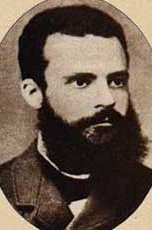
PARETO
Born July 15, 1848 Paris, France
Died Geneva, Switzerland August 19, 1923 (aged 75)
Pareto principle
Italian economist Vilfredo Pareto
July 15, 1848, Paris – August 19,
1923, Geneva
The Pareto principle (also known as the 80-20 rule, the law of the vital few and the principle of factor sparsity) states that, for many events, 80% of the effects comes from 20% of the causes.
Business management thinker Joseph M. Juran suggested the principle and named it after Italian economist Vilfredo Pareto, who observed that 80% of income in Italy went to 20% of the population. It is a common rule of thumb in business; e.g., “80% of your sales comes from 20% of your clients.”
It is worthy of note that some applications of the Pareto principle are appeals to a pseudo-scientific “law of nature” to bolster non-quantifiable or non-verifiable assertions that are “painted with a broad brush”. The fact that hedges such as the 90/10, 70/30, and 95/5 “rules” exist is sufficient evidence of the non-exactness of the Pareto principle. On the other hand, there is adequate evidence that “clumping” of factors does occur in most phenomena.
The Pareto principle is only tangentially related to Pareto efficiency, which was also introduced by the same economist, Vilfredo Pareto. Pareto developed both concepts in the context of the distribution of income and wealth among the population.
Practical applications
The observation was in connection with income and wealth. Pareto noticed that 80% of Italy’s wealth was owned by 20% of the population.
He then carried out surveys on a variety of other countries and found to his surprise that a similar distribution applied.
It also applies to a variety of more mundane matters: one might guess approximately that we wear our 20% most favoured clothes about 80% of the time, perhaps we spend 80% of the time with 20% of our acquaintances, etc.
The Pareto principle has many applications in quality control. It is the basis for the Pareto chart, one of the key tools used in total quality control and six sigma. The Pareto principle serves as a baseline for ABC-analysis and XYZ-analysis, widely used in logistics and procurement for the purpose of optimizing stock of goods, as well as costs of keeping and replenishing that stock.
In computer science the Pareto principle can be applied to optimization phrases.
No comments:
Post a Comment